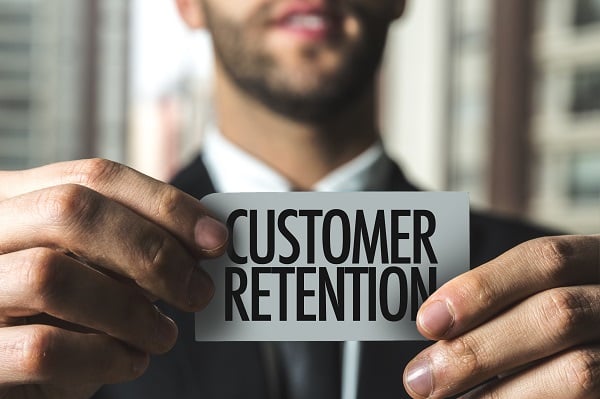I'm frequently asked what the most significant strategic challenge for B2B marketers is today. My answer is simple: engaging generational buyers.
Each generation has unique preferences and behaviours, so tailoring your messaging and proposition is essential. That's where sensory marketing comes into play.
Sensory marketing is a strategic approach that leverages the power of our five senses to create meaningful connections with customers. By engaging multiple senses, brands can evoke emotions, trigger memories, and enhance the buying experience.
It's no wonder that companies embracing sensory marketing are gaining a competitive edge. According to a recent Forbes article, brands that successfully engage all five senses can have a long-lasting impact on their target audience. From captivating visuals to captivating scents, every sensory touchpoint plays a vital role in shaping perceptions and influencing purchasing decisions.
As B2B buying behaviours evolve, understanding the preferences of different generational buyers becomes essential. Millennials, Gen X, and Baby Boomers have unique characteristics influencing their decision-making process. By incorporating sensory marketing strategies tailored to each generation, businesses can create personalised experiences that resonate deeply.
While it is a challenge, using sensory marketing to be more relevant to generational buyers it is also an excellent opportunity to differentiate from the competition, build stronger customer relationships and deliver brilliant experiences – something many smaller businesses talk about and want to achieve.
A few tips on how to get started with sensory marketing:
- Identify your target audience and their preferences. What are their pain points? What are their values? What are their sensory preferences? Once you understand your target audience well, you can tailor your sensory marketing strategies accordingly.
- Focus on creating a multi-sensory experience. The more senses you can engage, the more memorable and impactful your experience will be. For example, you could use visuals, sounds, scents, and textures to create a holistic customer experience.
- Be authentic. Sensory marketing should be used to enhance the customer experience, not manipulate them. Ensure your sensory marketing strategies align with your brand values and provide real value to your customers.
- Be creative and resourceful. You don't need much money to implement effective sensory marketing strategies. For example, you could use simple things like music, lighting, and fragrance to create a positive sensory experience for your customers.
Engaging Generational Buyers: Tailoring sensory marketing for authentic connection
When tailoring sensory marketing strategies, B2B companies may find it beneficial to consider the diverse preferences that can often, but not exclusively, resonate with individuals across different age groups:
For those who tend to value authenticity and a connection to their personal values — qualities that some associate with millennials — personalised and interactive experiences can be particularly engaging. For instance, a B2B company might offer immersive events with interactive elements that facilitate a more emotional connection, like a software company providing hands-on product demonstrations amidst engaging visuals and a dynamic setting.
Individuals who prioritise practicality and efficiency — traits sometimes attributed to Gen X — might appreciate marketing that gets straight to the point, highlighting the practical benefits of products and services. A manufacturing company could, for example, use clear and impactful visuals in a video to demonstrate the reliability and efficiency of their equipment.
For those who place a high value on established relationships and trust — qualities often linked with Baby Boomers — marketing that evokes a sense of familiarity and reassurance could be especially effective. This could be achieved by incorporating elements that stir a sense of nostalgia or reliability, such as a financial services company using a classic scent in their spaces to foster a warm and familiar atmosphere.
Several businesses I've supported and advised are already successfully using sensory marketing to reach different demographic buyers:
- A clothing retailer uses high-quality visuals and tactile experiences to appeal to millennials. The retailer created a virtual dressing room that allows millennials to try on clothes without visiting a physical store.
- A software company uses auditory and visual stimuli to appeal to Generation X through demo videos that clearly and concisely highlight its software's benefits.
- A financial services company uses tactile and olfactory stimuli to appeal to baby boomers by sending personalised letters printed on high-quality paper.
There are many other ways to use sensory marketing to reach different demographic buyers. The key is to be creative and think about using the senses to create a more immersive and engaging experience for your customers that is relevant to your business. And it’s not just for large companies; sensory marketing helps smaller, growing businesses compete with more prominent brands and reach generational buyers creatively and innovatively.
Success Strategies: Examples of small businesses effectively implementing sensory marketing
A small plumbing business created a website and social media presence that features high-quality visuals and videos of their work. They used sensory language to describe their services and products, such as highlighting the "fresh, clean scent" of their drains after cleaning or the "smooth, quiet operation" of their new taps.
In addition, the plumbing business offered a variety of sensory-based incentives to customers, such as:
- A free aromatherapy candle with every drain cleaning service
- A plush bath towel with every tap installation
- A discount on a new water heater with a complimentary water softener installation
By appealing to the senses of their customers, this small plumbing business created a more memorable and engaging experience that sets them apart from the competition.
Here are some other specific sensory marketing strategies that other small businesses have used successfully that link to their offer and continue the brand experience.
- Facilities management business, gifting customers a ‘tea break pack’ to thank them for the company and being their customers.
- Physiotherapy and Sports recovery centre, providing small heat packs to help with recovery or a scented with the infused oils used in the patient's treatment.
Recommended resources for B2B generational buyers
If you want to unlock the potential of sensory marketing and tap into the world of B2B generational buyers, I highly recommend exploring the resources shared below. They provide valuable insights and practical tips on effectively implementing sensory marketing strategies tailored to different buyer personas and help your business grow.
- Forbes: "Brands That Engage All 5 Senses Stand Out from the Competition"
- Forrester: "Changing B2B Buying Behaviors"
- Column Five Media: "How to Market to B2B Buyers by Generation"
- Harvard Business Review: "The Science of Sensory Marketing"
It's also important to note that sensory marketing can be used with other marketing channels, such as content marketing, social media marketing, and email marketing. By creating a multi-sensory experience across all channels, B2B marketers can increase their chances of engaging and converting generational buyers.




